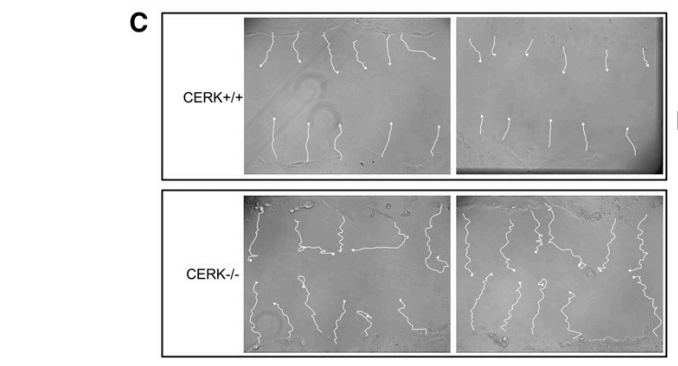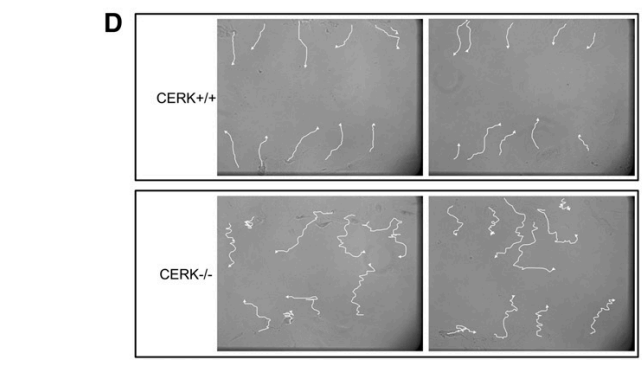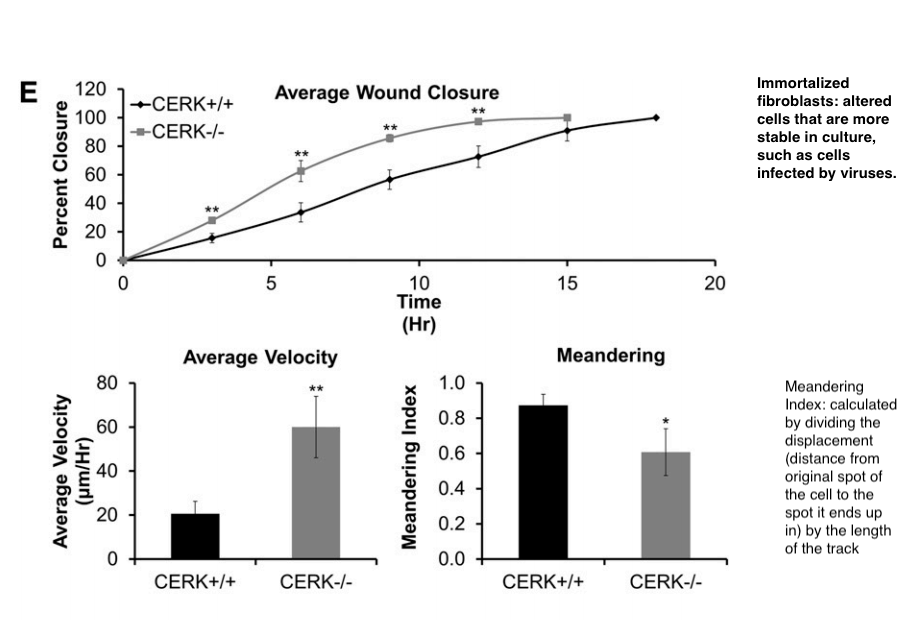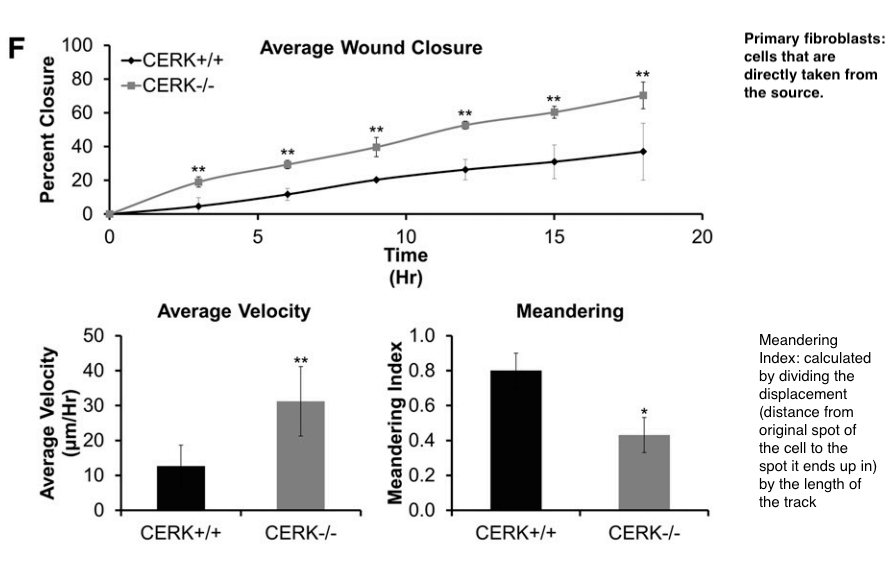Migration of fibroblasts to the site of a wound is an essential part of the wound healing process. Patterns of migration depict whether or not the fibroblasts are reaching the site in an efficient amount of time. Tracking the migration of these mouse embryonic fibroblasts helps to investigate the role of ceramide kinase-derived ceramide-1-phosphate in migration patterns. In order to track these movements, MEFs were seeded and grown into confluency before the monolayer was subjected to mechanically induced trauma by a pipette tip. The trauma induced on these fibroblasts promote migration toward the wound site. The movement was observed through video microscopy. Images taken every ten minutes for a minimum of fifteen hours were used to analyze the migration paths of single fibroblast cells. Not only were the images looked at, but the percent wound closure was also measured through software. The average percent wound closure was measured over time (in hours), as well as the meandering index (refer to the figure for measurement explanation) and average velocity.
Wijesinghe, D. S., Brentnall, M., Mietla, J. A., Hoeferlin, L. A., Diegelmann, R. F., Boise, L. H., & Chalfant, C. E. (2014)
Ceramide kinase is required for a normal eicosanoid response and the
subsequent orderly migration of fibroblasts
Journal of Lipid Research,55(7), 1298-1309
Ceramide kinase is required for a normal eicosanoid response and the
subsequent orderly migration of fibroblasts
Journal of Lipid Research,55(7), 1298-1309
(Translated by Jeetika Sainani)
Experiment: Measurement of migration of fibroblasts

Fig. 5C: Fibroblast migration patterns from immortalized ceramide kinase of both wild type and ablated fibroblasts. |

Fig. 5D: Fibroblast migration patterns from primary ceramide kinase of both wild type and ablated fibroblasts. |
|
|
According to this investigation, it was seen that the CERK-null fibroblasts move in random patterns rather than an orderly pattern. The wild-type fibroblasts seemed to move in a more orderly fashion as shown in the figures. Although CERK-null fibroblasts seemed to have a faster wound coverage when compared to CERK wild-type fibroblasts as seen by a higher average velocity, these fibroblasts do not show the orderly pattern that CERK wild-type fibroblasts show through the video microscopy. This kind of random and abnormal migration is what has the potential to create disorders and promote disease. CERK-derived ceramide-1-phosphate seems to influence migration patterns. |

Fig. 5E: Fibroblast migration patterns from primary ceramide kinase of both wild type and ablated fibroblasts. |

Fig. 5F: Fibroblast migration patterns from primary ceramide kinase of both wild type and ablated fibroblasts. |